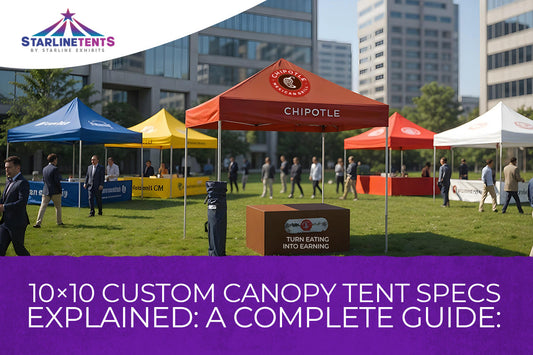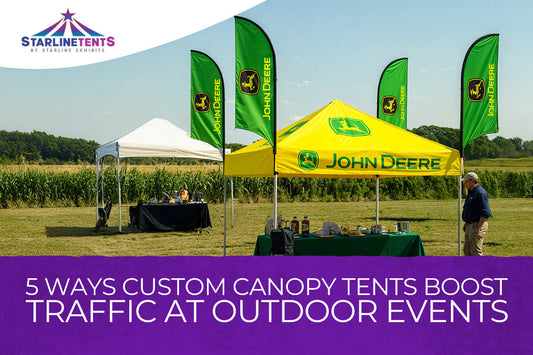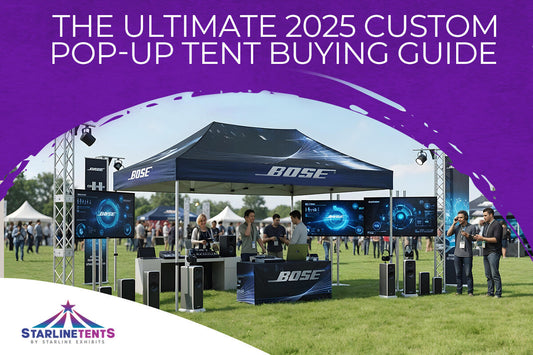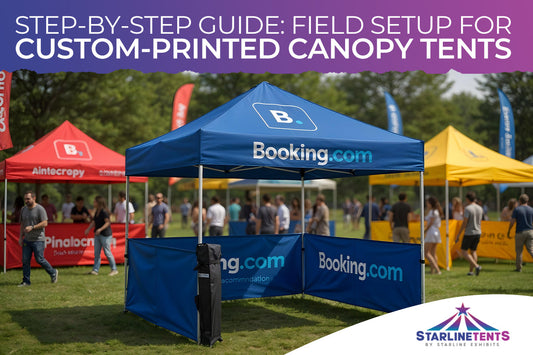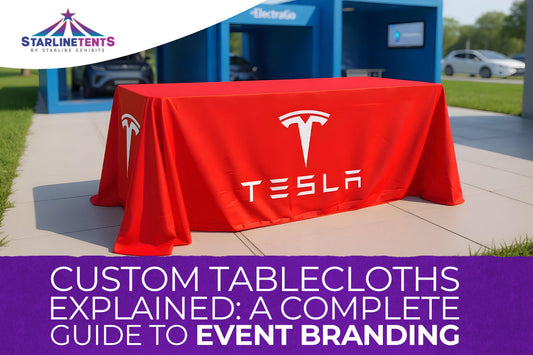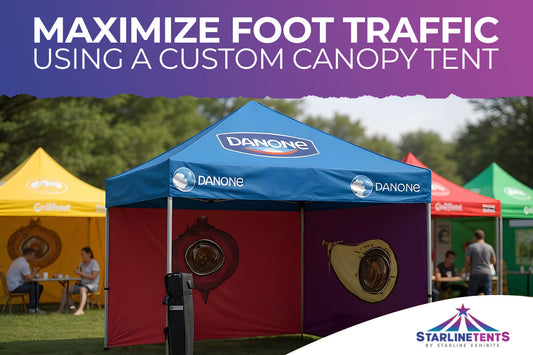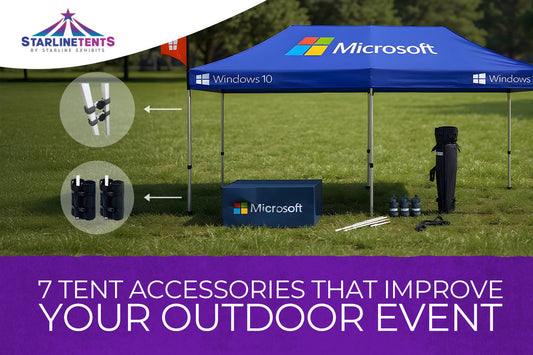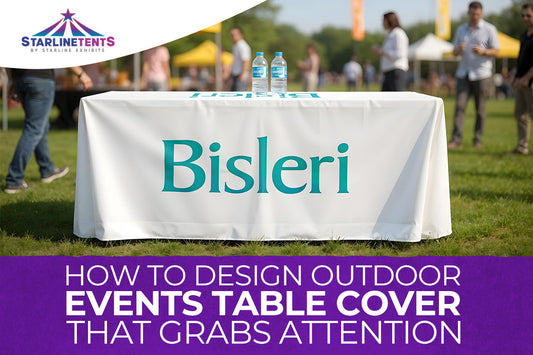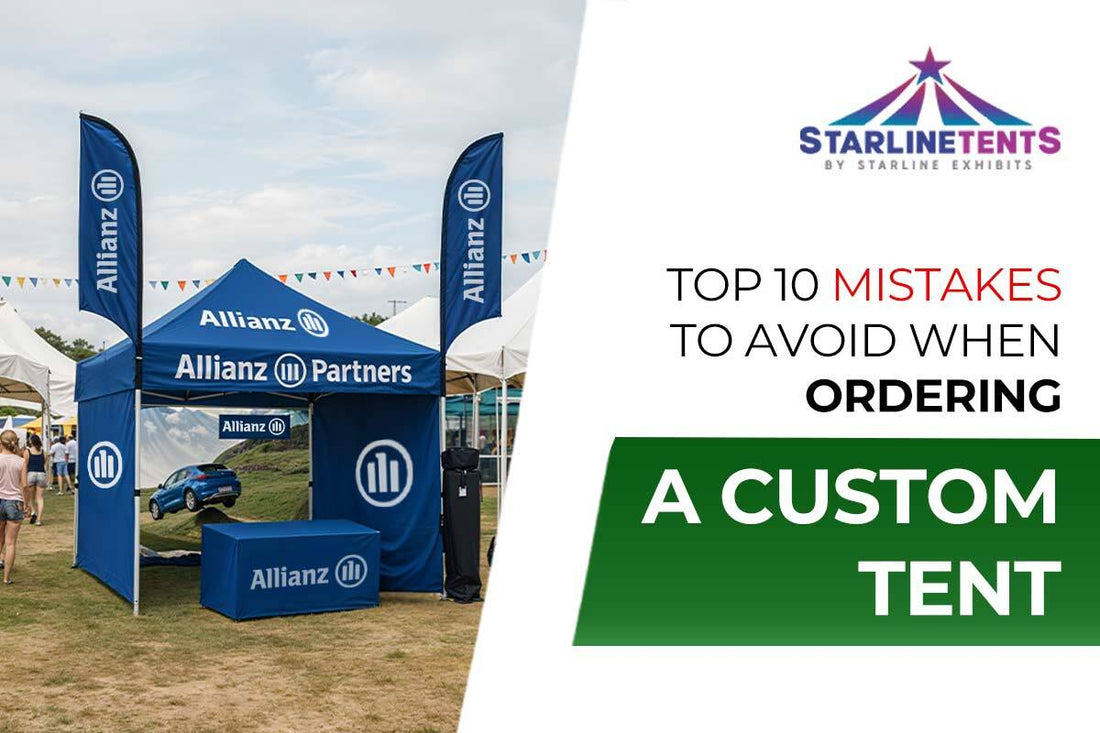
Top 10 Mistakes to Avoid When Ordering a Custom Tent
Custom tents are one of the most valuable tools for marketing your business at trade shows, pop-up events, and branded promotions. But if you don’t order them carefully, you could face costly issues that delay your campaigns or reduce event impact.
A quality tent is more than fabric and poles—it’s a portable billboard. This guide breaks down the top 10 mistakes businesses make when ordering branded tents and how to avoid them. These tips will help you protect your investment and ensure flawless setups every time.
1. Choosing the Wrong Tent Size
Selecting the wrong tent size is one of the most common—and costly—mistakes. A tent that’s too small crowds your staff and booth materials. One that's too large may overwhelm your setup or exceed event space limits, especially at indoor exhibitions.
Measure your booth footprint in advance. Factor in tables, banners, storage, walking space, and seating if needed. Always consider how your layout will look and function under the tent to get the best performance at every event.
2. Ignoring Fabric and Frame Quality
Price-focused buyers often overlook the materials used in tent construction. Low-cost tents may use thin fabric or weak joints that wear out quickly under sunlight, wind, or rain. That leads to unnecessary replacements and wasted time.
Look for tents with:
-
Powder-coated steel or aluminium frames
-
UV- and water-resistant canopies
-
Heavy-duty Velcro and double-stitched seams
A strong structure makes a major difference when you're exhibiting multiple times a month.
3. Forgetting About Storage and Portability
Your tent spends more time in storage than at events. Poor storage conditions lead to faded fabric, rust, and mildew. Even great tents can be ruined if stored incorrectly or transported without care.
Tent Storage Tips:
-
Keep your tent completely dry before packing
-
Store in a hard or padded case to avoid damage
-
Label components for faster access
-
Avoid storing on wet floors or damp basements
Routine tent storage maintenance prevents the need to constantly clean mould from tent surfaces or deal with frame damage.
4. Ordering Without Checking Setup Requirements
If your tent is too complex to assemble with your team, setup becomes frustrating and time-consuming. This is especially critical when setting up under tight trade show schedules or limited exhibitor windows.
|
Tent Type |
Setup Time |
People Needed |
Ease of Use |
|
Custom Pop Up Tent |
5–10 minutes |
1–2 |
Very Easy |
|
Frame Tent |
20–30 minutes |
2–3 |
Moderate |
|
Heavy Duty Event Tent |
30–45 minutes |
3–5 |
Advanced (Tools Needed) |
Before ordering, ask how to collapse a tent, how long setup takes, and what tools are needed. Choose according to your event staffing.
5. Overlooking the Importance of Anchoring
A strong tent still needs proper anchoring, especially outdoors. Too many users reuse used tent stakes or forget to bring weights, putting their entire setup at risk during unexpected wind gusts.
Anchoring Best Practices:
-
Use new, straight, heavy-duty stakes
-
Apply sandbags or water weights on hard surfaces
-
Reinforce corners with tie-downs or ropes
-
Always inspect anchors before and during the event
Never compromise on safety—anchoring protects your team, your branding, and your audience.
6. Misjudging the Branding Surface You Need
Your tent is your brand’s visual statement. Many businesses only print on the roof and miss the chance to brand sidewalls, valances, and accessories. This limits how much your booth stands out in a crowded event.
Work with your vendor to explore all branding areas:
-
Top canopy (all four sides)
-
Front and side walls
-
Backdrops and footers
-
Table covers and flags
The more branding space you use, the more visible your brand becomes in busy venues.
7. Not Preparing for Maintenance or Repairs
Even the best-built tents experience wear and tear. Unzipped walls, damaged poles, and bent connectors can all cause delays if you’re not prepared. Yet many businesses don’t carry backup parts or basic tools.
Know how to fix tent zipper issues and replace sliders on-site. Pack a tent repair kit with fabric tape, extra screws, and cleaning spray. It’s a small step that can save your entire setup during a crisis.
8. Skipping Accessories That Enhance Functionality
A tent alone doesn’t create a full exhibit experience. Without the right add-ons, your booth may feel unfinished, disorganized, or lack visual energy. Accessories improve interaction and help showcase your products effectively.
Must-Have Add-Ons:
-
Sidewalls for weather or privacy
-
Roll-up banners and retractables
-
Lighting kits and counters
-
Flag poles and branded podiums
A complete booth setup increases foot traffic and keeps your brand professional across every setup.
9. Failing to Review Graphic Proofs Before Printing
Visual branding mistakes are permanent once printed. Too often, businesses rush the process or trust low-resolution logos—resulting in blurry graphics, spelling errors, or poor alignment that weakens trust.
Before you approve, double-check:
-
All text for spelling and sizing
-
Logo placement and margins
-
Color accuracy on digital previews
-
QR codes and contact info visibility
One final review protects your brand identity at every event.
10. Choosing Price Over Long-Term Value
A cheap tent might save money today but cost you double later. If it fades, tears, or breaks under minor stress, you’ll face replacement costs, lost sales, and reputational damage.
Instead, think of your tent as a long-term business asset. High-quality frames, strong warranties, expert support, and customization tools deliver better return on investment for companies attending events regularly.
Final Thoughts
Ordering a custom tent is more than a one-time purchase—it's a strategic part of your brand’s visibility. Avoiding these 10 mistakes ensures your tent performs reliably, looks great, and delivers a strong presence at every business event.
If you're looking for professional-quality tents backed by experience, durability, and full-service customization, shop confidently with Starline Tents—your trusted partner for branded event success.
FAQs
1. What’s the best way to store a tent long-term?
Always dry the canopy completely before storing it. Use a padded case or hard-shell container and avoid storing the tent on concrete or in damp areas.
2. How do I clean mould from tent fabric?
Mix warm water and mild soap. Gently scrub the moldy areas with a soft brush and rinse thoroughly. Let it air dry in sunlight before packing.
3. Are used tent stakes safe to reuse?
Only if they’re in perfect condition. Avoid any that are bent, rusted, or worn, as they may not hold under pressure during outdoor events.
4. How do I collapse a tent safely without damage?
Remove accessories first. Follow the manufacturer’s fold-down sequence, avoid dragging the tent, and always secure it tightly into its carry case.
5. How do I fix a broken tent zipper on-site
Use a zipper repair kit or replace the slider. Apply silicone lubricant if it’s stuck. Avoid forcing the zipper to prevent tears.
6. Can I travel with my tent on commercial flights?
Yes, but it depends on the model and case. Choose compact pop-up tents with travel-ready cases. Always check airline baggage dimensions and weight limits in advance.

